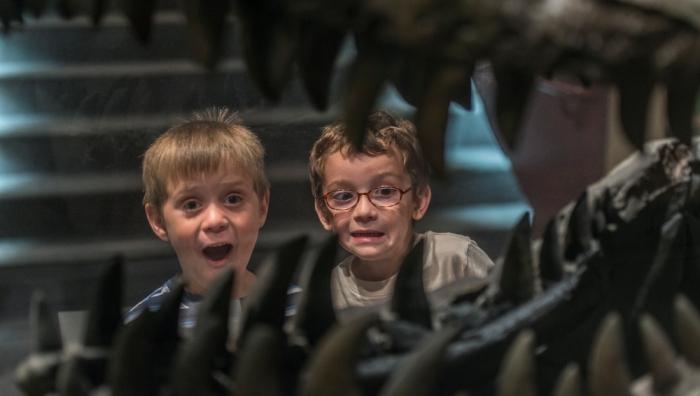 Back in June 2013, a low-level employee of the Cincinnati Museum Center was reprimanded for publicly scoffing at Answers in Genesis’s Creation “Museum”—across the Ohio River from Cincinnati—and complaining that it isn’t a proper museum at all.
Back in June 2013, a low-level employee of the Cincinnati Museum Center was reprimanded for publicly scoffing at Answers in Genesis’s Creation “Museum”—across the Ohio River from Cincinnati—and complaining that it isn’t a proper museum at all.
Well, it’s understandable that the higher-ups at the Cincinnati Museum Center don’t want their employees to show their contempt for tourist attractions in the vicinity. If one of them had scoffed at the Cincinnati Ballet or the Taft Museum of Art, that would have been a problem, too.
(Ironically, the Creation “Museum” itself was not always so concerned with collegiality: when it opened in 2007, it was circulating promotional material describing its ambition to “counter evolutionary natural history museums that turn countless minds against Christ and Scripture.” Très charmant.)
But the employee had a good point, somewhat obscured by the nomenclatural issue. Whether Answers in Genesis’s tourist attraction is called a museum or not is not a particularly important issue. What’s in a name? But whatever it’s called, it’s doing a poor job at living up to the recognized duties of a museum.
Remember, museums aren’t just collections of items heaped up willy-nilly. (If they were, then my garage would be a museum.) Rather, museums are sites for research and education. As such, they and their staff have professional responsibilities to present the best scholarly understanding of their materials in a way accessible to their audience.
When it comes to evolution, there’s no question within the scientific community. Evolution is a central, vital, and unifying principle of the life sciences, for which there is overwhelming evidence. Countless scientific and educational societies have agreed on this simple point—which Answers in Genesis of course rejects.
Museums that deal with the history of the planet and the career of life on it, therefore, have a professional responsibility to acknowledge evolution in their scientific research and to highlight evolution and the scientific consensus on the evidence in their education of the public.
That’s why the Association of Science-Technology Centers—of which the Cincinnati Museum Center is a member—emphasized in a 2005 statement that “[e]volutionary theory is central to modern science” and that it and its members “present information based on scientific evidence.”
And that’s likewise why the Committee for Museums and Collections of Natural History of the International Council of Museums endorses “the study of evolution from past, present and developing natural history collections and supports evolution being presented in public engagement activities.”
Museums (and informal education venues in general, from aquariums to zoos) also play a crucial role in supporting and supplementing formal education. Ohio’s science standards treat evolution appropriately as a central unifying principle of the biological sciences; Ohio’s natural history museums and science centers therefore should do so as well.
On all these counts, Answers in Genesis’s Creation “Museum” is performing miserably. Far from reflecting and contributing to the scientific consensus, it flouts it. As geologist Timothy H. Heaton commented in his report of his visit, published in Reports of the NCSE, “This is a biblical worldview with a few scientific elements thrown in for show.”
But with its exhibits, its educational outreach, and the diligent work of its research scientists behind the scenes—and now with its new dinosaur exhibit, displaying marvelous fossils of Mesozoic dinosaurs that evolved in isolation in the Southern Hemisphere—the Cincinnati Museum Center is clearly on board with evolution.
So whether or not you think the employee deserved to be reprimanded, it wasn’t really necessary for the Cincinnati Museum Center to say that Answers in Genesis’s Creation “Museum” is scientifically bankrupt—it’s already showing it.

